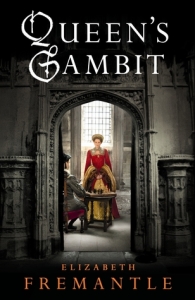
Genre: Adult Non-Fiction – History
Published: 2024
Format: Hardback
Rating: ★★★
I enjoyed this book – it was good to learn more about some of the people I knew less about like Arbella Stuart, Grainne O’Malley, and Aemilia Lanier. I had only heard of Lanier in passing, knew she was a poet, and O’Malley I largely knew about through Greg Jenner’s excellent episode on her on his ‘You’re Dead to Me’ podcast. I have Sarah Gristwood’s biography of Arbella Stuart to read so I may now be bumping that up my list!
There are a few errors throughout like referring to Henry Courtenay as 2nd Marquis of Devon when he was 2nd Earl of Devon and 1st Marquis of Exeter or saying that Perkin Warbeck claimed to be Richard Duke of Gloucester when he actually claimed to be Richard Duke of York. There were also some aging errors like Edmund Tudor being aged 24 on 1 November 1455 but aged 26 on 1 November 1456, and that Margaret Beaufort and John de la Pole being aged 3 and 7 on their marriage, but they were only born a year apart. Little things like this kept distracting me from what I was reading.
I would say that we need to be careful applying the word ‘feminist’ to 16th century women as it is a modern concept, and these women were living in very different times. But I also think that this wasn’t necessarily a feminist view which I liked, though it does mean the title is a little misleading. Just personally for me, I don’t like to see a modern concept put on women living 500 years ago, others might, and that might just be a personal preference for me.
Overall, I think this was a good examination of these women, particularly the ones which are less well-known where there is less confirmed information about them. It was very accessible for those with less knowledge which is really important – I love anything which makes history more accessible to those who love to learn but wouldn’t necessarily pick up a drier text. I know I struggle reading some of the drier academic texts sometimes myself, so this is a great introduction to prompt people to look further into the women discussed, and women’s history more generally.







